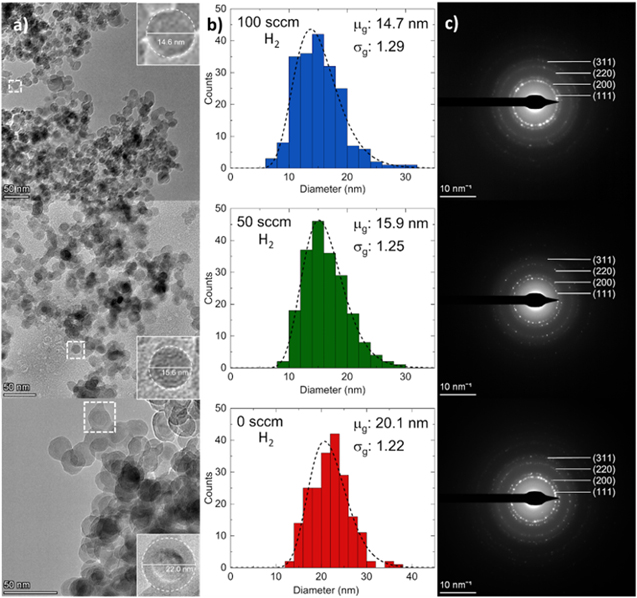Nanocrystals are crystalline particles with at least one dimension measuring less than 1000 nanometers (nm), or less than 1000 times the average thickness of human hair. Nanocrystals have proven advantages in a wide variety of applications and have garnered increasing scientific interest due to their size-tunable properties. The majority of nanocrystal research has focused on liquid-phase synthesis, but this method is limited due to the temperature constraints of the solvents involved. Gas-phase approaches, which do not require solvents, are inherently capable of operating at high temperatures and can successfully synthesize nanomaterials.
Nonthermal plasmas, a gas-phase synthesis approach, operate not in thermal equilibrium and are advantageous for nanomaterial synthesis due to the drastic differences in their constituent temperatures. The heavy gas species are often at temperatures very close to room temperature, while free plasma electrons can achieve temperatures between ∼10,000 and 50,000 K. These high temperatures are critical for the formation of crystalline nanomaterials.
The Kortshagen Group specializes in nonthermal plasma synthesis to form nanocrystals with new optical, electrical, thermal, and energetic properties. With these techniques, we are able to synthesize a wide variety of nanocrystals, from semiconductors, to ceramics, to metals.


